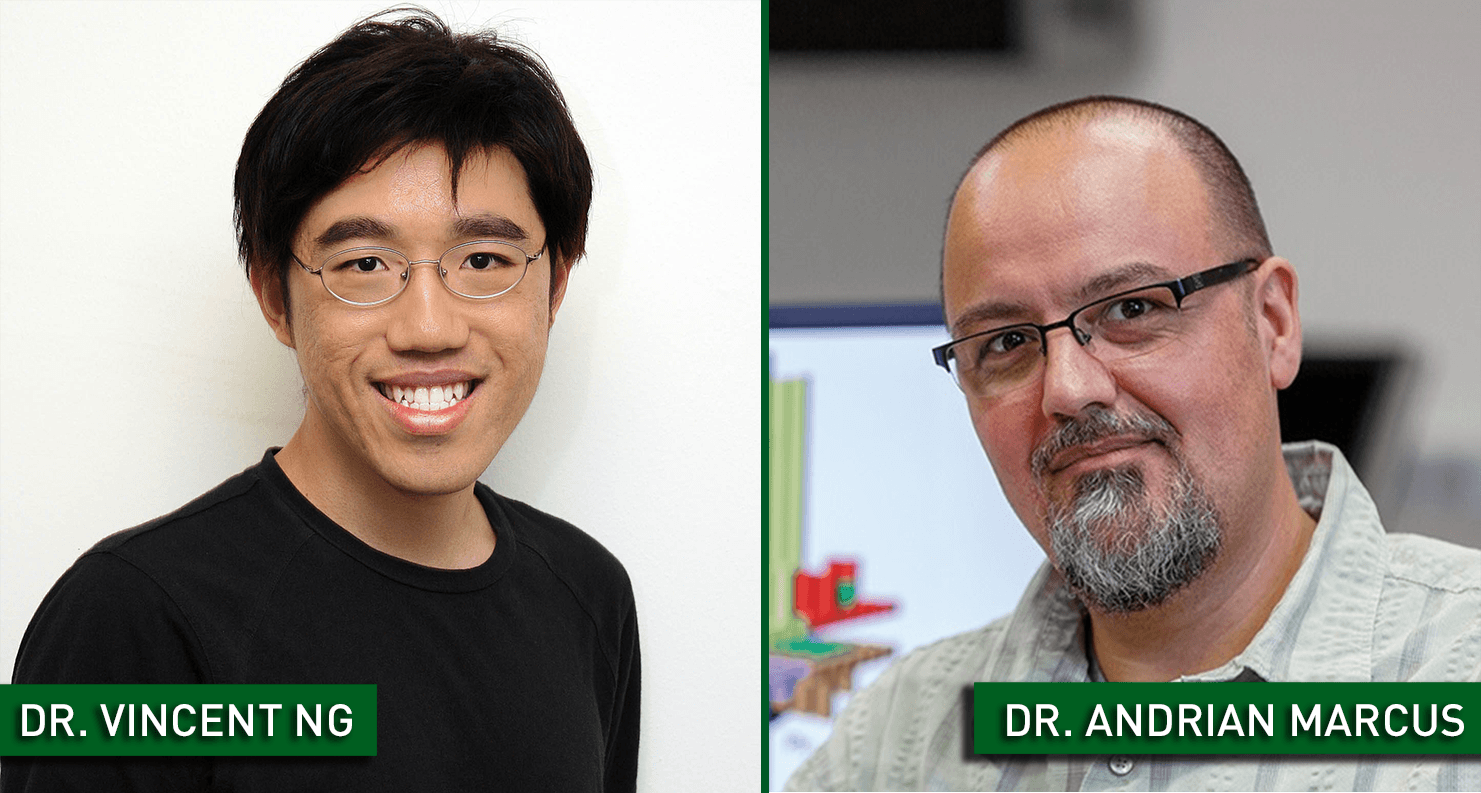Drs. Andrian Marcus and Vincent Ng Create Automated System for Improving Computer Bug Reports

When software doesn’t work properly, many frustrated users fill out online bug reports. Too often, however, their explanations are unclear or incomplete, leaving developers without enough information to resolve the issue, said Dr. Andrian Marcus, professor of computer science in the Jonsson School.
With funding from the National Science Foundation, Marcus is working with other computer scientists to create a more effective way for users to report problems to developers. The researchers have developed a tool that provides feedback to the users on the quality of their reports. The research was presented recently at the ACM Joint European Software Engineering Conference and Symposium on the Foundations of Software Engineering and won the ACM SIGSOFT Distinguished Paper Award.
“Thousands of these reports are passed on to developers,” Marcus said. “The first thing they have to do is reproduce the bug.”
Without enough information to reproduce the error, developers spend an excessive amount of time resolving the issue, if they can fix it at all, he said. The researchers aim to bridge the gap between users’ descriptions of what happened and the technical information that developers need.
Marcus teamed up with Dr. Vincent Ng, professor of computer science and an expert in natural language processing and machine learning, and two doctoral students: Jing Lu, a research assistant in computer science, and Oscar Chaparro PhD’19, now an assistant professor at the College of William & Mary. The UT Dallas researchers also collaborated with other researchers from William & Mary and the University of Sannio in Italy.
The team built an automated approach that can analyze the text in a bug report, assess the quality of the information and provide feedback to users who report bugs.
“Our research is about automatically identifying these components and allowing the machine to determine the steps to reproduce an error,” Marcus said.
The platform identified errors in bug reports with more than 90% accuracy. The researchers’ long-term goal is to create an interactive system that will produce better reports.
“We don’t teach people how to write bug reports, so they write gibberish,” Marcus said. “If we can create a system that elicits the information from a conversation, we believe there will be better bug reports coming out of it.”
Source | UT Dallas News Center | Kim Horner
ABOUT THE UT DALLAS COMPUTER SCIENCE DEPARTMENT
The UT Dallas Computer Science program is one of the largest Computer Science departments in the United States with over 3,315 bachelors-degree students, more than 1,110 master’s students, 165 Ph.D. students, 52 tenure-track faculty members, and 44 full-time senior lecturers, as of Fall 2019. With The University of Texas at Dallas’ unique history of starting as a graduate institution first, the CS Department is built on a legacy of valuing innovative research and providing advanced training for software engineers and computer scientists.




